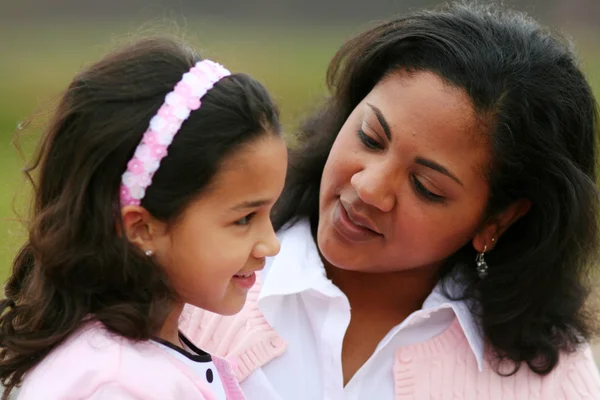
Presentation Skills for Kids: What They Are and Why They Are Important
Giving a presentation means providing information about a certain topic usually in front of other people. Teachers present different topics all day, day in and day out. We know that good teachers are the ones who can explain lessons in a simple, easy way that kids understand. Similarly, presenters must deliver information in a clear, educational, and engaging way so people can understand and even enjoy listening to them.
Table of Contents
Why presentation skills for kids are important
There are multiple reasons why teaching presentation skills for kids is incredibly important; an essential outcome of the school experience. When kids learn how to present in front of the whole class, it allows them to build confidence and self-esteem, and become more aware of themselves in terms of thoughts and emotions.
Furthermore, learning how to give a presentation from a young age makes kids more comfortable with public speaking which becomes absolutely necessary in high school, college, and in their professional life as well.
Here are some benefits that come along when kids learn and practice presentation skills.
Presentation skills for kids help them communicate with others
On top of all the advantages of presentation skills, kids become able to communicate well with others.
As the name suggests, giving a presentation surely involves speaking. Those who can give very good presentations are able to express their ideas in a clear way that is easily understood by those around them.
For kids, self-expression is quite crucial. When kids learn to explain things well in a presentation, they inherently develop an ability to properly express themselves and their needs. This helps them feel comfortable among others. It also makes it easy for others to help them if the kids face any problems since they will be able to express themselves in a good way.
As a result, kids become better communicators and more up to approaching other kids and developing friendships with them.
Increase self-confidence
We cannot also forget about how being able to speak in front of others enhances kids’ self-confidence. When they see themselves able to communicate a message to others and clearly explain the topic they are presenting, they feel accomplished and confident.
Receiving positive feedback and encouragement from their teachers and colleagues also contributes to increasing kids’ self-esteem.
Take on responsibility
Then, responsibility.
When kids have the assignment of giving a presentation about a certain topic, they learn to be responsible for the whole project from start to end. Sure, they can be guided by either their parents or teachers or both. But they are the ones who will do the actual work, from determining the points they will talk about, deciding on which information to include, preparing the slides, and adding appropriate pictures that support the presentation.
Become organised
In some way, presentations teach kids to be organised and manage their time properly. If they only have a few minutes to talk about a topic in front of the class, they learn to include the most important and relevant information and avoid fillers.
As a result, kids become more precise and clear about what they are saying. They learn to use the most accurate and appropriate vocabulary to express their thoughts. They avoid talking too much about unrelated things that may confuse whoever is listening to them. On a wider scale, presentations help kids become more exact when expressing their thoughts and emotions.
Prepare well
Another plus point that comes along with learning presentation skills is that kids learn to prepare well for the topic they will present. First, they have to plan the topic and choose which and how much information to include that must address the topic and fit the duration of the presentation.
Then, kids do the research either by using their school textbooks, going to the school library, or browsing the Internet to look for the necessary resources. This definitely helps them in the long run since they will need to have good research skills in high school and college.
Breaking down presentation skills
People might think that giving a presentation is only standing in front of an audience and talking about some topic. While it does include standing and talking, there are so many other skills that speakers should be able to demonstrate in order to communicate their message clearly.
In fact, working on developing these skills and paying attention to them while giving a presentation is also a great way to tame the fear usually associated with having to speak in front of an audience and feel more comfortable and approachable.
Some of these are verbal communication techniques which involve using words. Others comprise forms of no-verbal communication techniques. These include anything one can do to convey messages without talking or making sounds.
Let’s discuss these skills one by one.
Eye contact
We make eye contact with people when speaking to them. To be more correct, eye contact involves two people looking at each other at the same time. It is a great form of non-verbal communication that can tell a lot about people.
In a presentation, all eyes are usually set on the speaker so in return, he/she should look back at the audience; look them in the eye. That seems quite obvious and deceptively easy. We do this all the time when we speak to other people but it gets quite hard when it comes to presentations.
When people feel nervous while giving a presentation, they unconsciously forget to look at the audience. Some people might fix their sight on only one person which might translate into them ignoring the rest of the audience. Others feel so nervous that they only look at the slides or the material they are presenting, which again makes the audience feel the speaker is not talking to them.
But eye contact is important.
Come to think of it, looking others in the eye means we are giving them attention. Our time and concentration are currently dedicated to what they are saying. And vice versa.
Have you ever not felt annoyed when you are speaking to somebody and they are not looking at you? Looking directly at someone’s eyes tells them how much we care about their thoughts, their emotions, and their words.
In other words, making eye contact with your audience allows them as well as you to focus more on the topic being presented. It also makes it easy for them to understand it and even remember it afterwards. If you are looking away from the audience, they will inevitably look away too and drift off into their thoughts and forget about the presentation.
Body language
This is another technique of non-verbal communication.
The most straightforward definition of a language is a set of words that express and carry information. We can define body language in the same way but with tiny tweaks.
A body language is a set of body movements, posture, hand gestures, and facial expressions that each means a different thing. For instance, we know that nodding the head means yes and shaking it means no. High fives mean “bravo” and firm handshakes mean that you are happy you met someone or are giving them a grateful thank-you for something they offered you.
Besides making eye contact with the audience, your body language is a bonus technique to make yourself understood easily, feel relaxed when talking, and make your audience focus better on the topic you are presenting. Interestingly, people seem to pay more than 80% of their attention to body language than to actual words, according to some studies.
That said, using body language in presentations should not be hard since we already use body language every day in our life. We spontaneously start to move our hands, arms, and heads and make different postures and gestures to show others clearly what we want to say.
However, one has to be very careful with body language. Just like there are good and bad words, there are body language gestures that convey positive or negative messages. Learning what every movement means, which of them to use, and which to avoid highly contributes to the success of the presentation.
Here are some important body language behaviours to use while giving a presentation.
Smile
When somebody smiles at us, we sure cannot help but smile back at them. Another thing that comes along with a smile is the strike of happiness that we feel at such a moment. That is why smiling is the most important thing in the body language toolbox.
Smiling at a presentation will help you feel relaxed. Having your audience smile back at you, you will also feel more confident. Besides, smiling must involve your eyes and not just your lips. This will show you are happy and excited to present the topic.
Move
Standing still in one spot throughout the presentation is pretty uncomfortable both for the speaker and the audience. On the contrary, moving from right to left on stage or classroom makes you feel relaxed, confident, and comfortable. This will be easily communicated to your audience as well which will inevitably increase their level of concentration on what you are saying.
Just make sure that you do not move too much back and forth. This will distract the audience instead of making them concentrate. You should also avoid moving fast or droopingly; otherwise, you will make the audience feel lazy. Instead, you should straighten your neck and lift your chin to show a good posture.
Nod
We know that nodding the head means yes or conveys agreement with what someone is saying. Nodding on what a member of your audience says means you are highly interested in what they say. Besides, you should keep eye contact with them and listen to them without interruptions.
Body language gestures to avoid when giving a presentation
There sure are some gestures that give negative messages about the person using them. Here are some of the body language gestures that you must avoid when giving a presentation as most of them suggest insecurity, shyness, discomfort, defensiveness, surprise, anxiety, fear, uncertainty, disinterest, and nervousness.
- Crossing arms
- Putting arms in the pockets
- Raising eyebrows
- Nodding too much
- Moving around so much
If you are not quite sure what to do with your hands after avoiding the gestures above, you can point at the slides or material you are presenting, clasp your hands above the belly button, or keep them by your side.
Voice tone
We can tell so many things about how a person is feeling only by listening to their voice. We know that nervousness and fear have voices totally different from happiness and excitement.
Mumbling suggests a person is uncertain about what they are saying. On the contrary, confidence can be easily shown in a strong, deep voice. Speaking too fast means you are nervous or quite excited while speaking too slow and pausing every now and then means you are either lazy or uncertain.
A presenter’s nightmare is having the audience get bored, yawn, drift off into thoughts, or fall asleep, which is the worst case ever. To avoid that, you need to make sure your audience is attentive and focused during the entire presentation. This can be achieved by varying your voice tone as well as speed.
One way to illustrate how important it is to vary the voice tone is the bedtime story. Kids usually fall asleep as their parents tell them a story in a monotone. The brain easily gets used to the same tone and loses interest gradually.
If your presentation is monotonous, you have already lost your audience.
So anyone giving a presentation should learn how to change the pace of their speech and the volume of their tone according to the information they are explaining. Besides maintaining the audience’s attention, a varied voice tone helps the presenter feel more relaxed and engaged with the topic.
Other things that presentations involve
It is true that the components we just mentioned help make a presentation successful but they are performed during the presentation. On the other hand, there are multiple other things that also play a vital role in the success of the presentation. The only difference is that they come before the day of the presentation.
To give a good presentation, presenters need to take care of:
1. Researching
2. Planning the topic according to the period of the presentation
3. Preparing the topic and deciding on the information they will include
4. Preparing a hook—a short story or question at the beginning of the presentation to catch the audience’s attention.
5. Preparing visuals, PowerPoint or paper slides, and using a mix of words and pictures
6. Practicing the topic while performing the skills we discussed above
How parents can help kids improve their presentation skills
While kids can learn presentation skills basically at school, parents can also help their kids practise and improve their presentation skills at home. Here are some tips that can help.
1. Encourage kids to speak
Kids will not be able to give a presentation unless they learn how to speak and express themselves clearly. That is why parents should encourage their kids to have conversations.
Asking kids questions about what they did at school or how they found the new teacher is a great way to encourage them to speak and engage in a conversation. In addition, giving comments and asking questions when appropriate motivate kids to elaborate.
Parents also need to show support and interest in what their kids are saying. Making eye contact, smiling, listening carefully without interruptions, and telling the kids encouraging words show them their opinions are highly interesting and worth listening to.
2. Let kids present to the rest of the family
As parents pay attention to what their kids are saying, they should be able to recognise what topics the kids are mostly interested in and usually bring up. Then they can ask the kids to talk about one of these topics in front of the rest of the family.
Helping kids choose what they will say in the presentation teaches them to prepare well. Writing the main points down on paper and practising saying them out loud beforehand will make them feel more confident.
Parents may also emphasise their kids applying the presentation skills from making eye contact, to using the correct body language and varying their voice tone.
3. Show support
As rehearsals teach kids to speak clearly with a good pace, giving effective feedback in a nice way will make the presentation even easier and easier for kids.
Kids usually feel confident when they receive credit for something they did. Parents should support their kids by telling them encouraging words and appreciating the efforts they are doing.
The more kids feel their parents believe in them, the more confident they will be not only while presenting but even in everyday situations as well.
Bringing it all together…
Presentation skills are important for kids as much as they are for university students and job candidates. They teach kids to communicate with others, better express themselves, prepare well, and be responsible for something. Furthermore, they increase their levels of self-awareness, self-esteem and self-confidence.
Presentation skills involve many components that are highly important to better communicate with the audience and deliver the message. For instance, eye contact means looking at all the audience while presenting and not at only one person. Body language must show confidence and increase engagement while a varied voice tone is intended to keep the audience attentive and focused.
Parents can help kids practise presentation skills first by encouraging them to speak while carefully listening to and making eye contact with them and giving them credit when it is due. Then step by step, parents can teach their kids the different skills and give them the chance to practise them by presenting in front of the whole family.






Leave a Reply